Understanding the subtle differences between a taper, a fade and the (especially nuanced) taper fade is a lot trickier than you would think.
For decades men’s haircuts have been remarkably consistent in that they almost always feature longer hair on top and progressively shorter hair toward the neck.
But if I’ve said it before, I’ve said it a thousand times: the (handsome) devil is in the details.
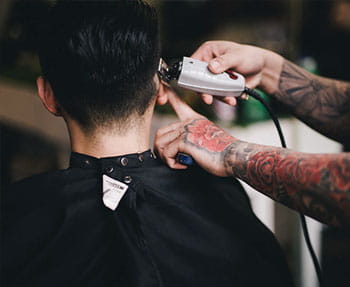
When you go to the barber to get your haircut, you want to be confident that A) you know exactly how to communicate what you want, and B) he or she perfectly understands what you’re asking for.
There’s nothing worse than that nervous feeling you get when you’re sitting in that barber’s chair and he’s about to start, but you have the sneaking suspicion that his vision for your hair doesn’t quite line up with yours.
To help you eliminate the confusion (and the shitty haircuts that can result from it), let’s take a deep dive into tapers, fades and the infamous taper fade.
In this post you’ll find out exactly what defines each one, which one might be right for you, and how you can get the right cut to suit your face shape, hair type and personal style.
Taper vs Fade vs Taper Fade
Everything You Need to Know to Get Your Hair On-Point
First Up:
Tapers
What is a taper haircut?

Strictly speaking, the word taper means to gradually lessen, or to “reduce thickness toward one end.”
And when it comes to haircuts, that end is your neck.
A taper means that you have longer hair near the top of your head, which gets progressively shorter towards your neck.
It’s possible to have a taper without having particularly short hair.
When you see guys sporting haircuts with longer length and volume on top (like Timberlake in the picture here), but not-so short sides that still look neat and easy to maintain, that’s a taper.
What does a taper look like?
You mean to imply that I haven’t painted you a picture with my words? That’s cool, it’s not like I make my living by writing or anything…
Just kidding. When it comes to hairstyles, a picture’s worth way more than a thousand words. Below are a few examples of men’s tapered haircuts.
It’s also worth noting that, while all the guys below have a side part taper with pretty ample hair on the tops of their heads, it’s possible to have both taper and fade styles with a buzz cut, a faux hawk or pretty much any other popular hairstyles.




Low Taper
A low taper is a taper hairstyle where the hair length doesn’t significantly start to change until a lower point on your head, usually below the ear.
If you want to maintain some length on the sides, a low taper is what you’re after.
Mid Taper
A mid taper is when the hair starts to get shorter at the midpoint of your head, so roughly around the top of your ear or slightly above it.
With a mid taper there will be a larger discrepancy between the length of your hair on the top half of the head and the bottom half.
High Taper
You can probably see where this is going.
With a high taper you keep the length on top, and then start going shorter on the sides almost immediately, so that the hair on the top of the head is significantly longer than all of the rest.
Fades
What is a fade haircut?
A fade cut is essentially a normal taper haircut with a very short taper.
Like a taper, with a fade your hair is at its longest toward the top of your head and gets progressively shorter toward the bottom.
But fades go really short, often revealing the skin on the side of your head. (A type of fade that’s known, appropriately enough, as a bald fade.)
Whereas a barber could use only a pair of scissors to give you a nice taper cut, for a fade he would use clippers to go really short on the sides, and may even use a straight razor at the bottom.
What about low, mid and high fades?
The relationship between low fade, mid fade and high fade haircuts is the same as the relationship between low, mid and high tapers.
But (as you’ve just learned) each of the different types of fade haircuts go shorter on the side than their tapered counterparts, often all the way down to the skin.
What does a fade haircut look like?
Here are a few shots that show you what a fade looks like:
What’s the difference between a taper and a fade?
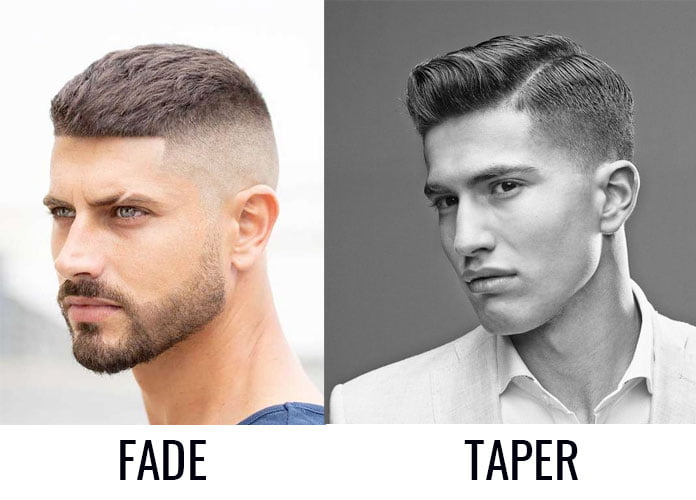
One way to think about it is this: a fade is just a shorter version of a taper.
If you ask your barber for a fade, it will last a few weeks until your hair starts growing back, at which point it will be a taper.
It will still have the same basic shape – it will still be longer on the top and get progressively shorter toward your neck – but as the hair on the sides and back of the head fills in, your fade will, well, fade away, if you will.
(You shouldn’t; that was a terrible pun.)
Pro Tip:
Personally I like to go for a fade in the summer when it’s hot out, and I don’t want a lot of excess hair on my head.
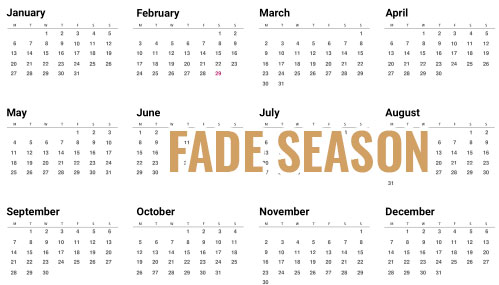
I get a short fade about once a month in June, July and August. Then, I let the August fade grow out for about two months, so by fall my hair has longer length, but it still has a nice taper shape that looks purposeful and polished, even though I haven’t seen (or paid for) a barber in months.
Taper Fades
What’s a taper fade haircut?
Technically speaking, there actually isn’t any one style or cut that epitomizes a “taper fade.”
People tend to use that phrase because they don’t really understand the (admittedly nuanced) key differences between a taper and a fade.
What does a taper fade mean?
Since a taper could technically involve quite long hair, but a fade by definition means the hair is really short (to the point of almost being gone) on the sides, then a “taper fade” could be considered the halfway point, where there’s still some length, but really not much.
How short is a taper fade?
If you keep your hair a bit longer on top, then ask your barber to use a number three or four guard on the sides, tapering down to a two at the bottom. That could be considered a standard length for a taper fade.
But note how qualified the language I just used is. “That could be considered a standard length,” not the standard length.
Again, the rules are pretty loose here. The picture I chose above to help answer the question “what is a taper fade” goes shorter than a two guard at the bottom, but it’s still a pretty classic taper fade, in my opinion.
What does a taper fade look like?
I knew you were going to ask that…
What’s better: a taper or a fade?
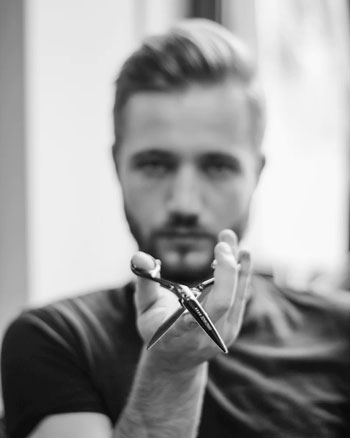
It really depends on your perspective.
As I mentioned above, in the summer I prefer a fade because it’s lighter weight and easier to maintain, but in the fall and winter I stick with a taper because I like having the extra length.
If you’ve never tried either style before, start with a taper. If you’re not used to having that kind of shape in your hair, the taper will be a good way to ease yourself into it.
After awhile, you might find that you want an even sleeker, more modern look, at which point you can go for a full fade.
The good news is that the stakes are relatively low, because even if you end up hating the fade, you’ll only have to wait a few weeks for it to grow back into a fuller, but still nicely tapered cut.
Where did the taper fade originate?
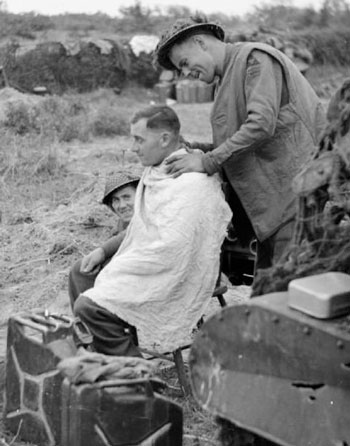
According to Ebony magazine, the taper/fade owes its origin to the military haircuts of the 40s and 50s.
The military has always had strict policies around short haircuts, which were considered both more disciplined and more tactical.
With the proliferation of wars throughout the 40s (WWII), 50s (Korea) and 60s (Vietnam), in the middle of the 20th century many young men enlisted and were issued a taper or fade haircut as soldiers, then kept the style throughout their adult lives.
Because of its association with the military, a tapered hairstyle has come to be associated with professionalism. That’s not as true now as it was back in the day, but a tapered haircut still looks sharp as hell, and conveys that you take yourself (and your style) seriously.
How to Taper Fade Your Own Hair
When the pandemic struck and barbershops around the world were forced to close, a lot of guys suddenly became more interested in cutting our own hair at home, and for many of us, the habit has stuck.
While giving yourself a proper fade at home is extremely difficult, tapering your hair – and even doing the taper fade described above – is actually a lot easier than you might think.
Here’s an easy, step-by-step guide to giving yourself a taper fade at home.
Step 1:
Use the right tools
Before you even consider giving yourself a taper fade at home, remember this: scissors are dangerous. Potentially for your health if you’re not careful, but especially for your hair.
When trying to cut your hair on the sides, scissors leave little margin for error.
A good pair of clippers with a wide range of guards, however, is a lot easier to use and a lot more forgiving.
Step 2:
Start high (and go slow)
To get started, pick the length that you want your hair to be at the highest point on the sides of the head.
For instance, if you’re doing a classic side part on top, you might want the hair on the sides, just below the part, to be a #4 guard, which leaves you some length next to your part.
So you’d start by putting the #4 guard on your clippers and doing the sides all the way from just underneath your part, down to the bottom.
Step 3:
Go one guard lower
Once you run the #4 across the sides and back you’ll probably find that you’re happy with the length above your ears, but you want your hair to be shorter below them.
Go down to a #3 guard, and this time start at the bottom of your hair. Then run the clippers up to where you want the taper to start.
If you’re doing a high taper, you’ll run the #3 above your ear; for a mid taper you’ll run it to just under the top of your ear; and for a low taper you’ll really just hit the lowest portion of your head, near the very bottom of your natural hair line.
Step 4:
Go down one more (if desired)
If all you wanted was a low taper, you might already be done. But take a look and decide whether you’re happy with the current results, or you want a little more shape.
If you’re doing a high or mid taper, throw on the #2 guard and start from the bottom again, but this time don’t go up as high.
For this step you really just want to hit the bottoms – think sideburns, back of neck, right behind the ears, etc. – then stop to see where that gets you.
Remember: you can always go shorter, but if you go too short to begin with, there’s no going back. (At least not for a few weeks.)
Step 5: Final Assessment

Take a look at your work and make sure it’s even all the way around.
Clean up any patches, blend in any unsightly straight lines, and make sure you haven’t missed or forgotten any sections of your head (especially around the back).
When you’re done with the taper fade, take the guard off completely to go around the edges and make sure your sideburns are straight (and even).
Congratulations. You just gave yourself one of the most classic and unimpeachable haircuts of all time.
And there was no hardly any blood!
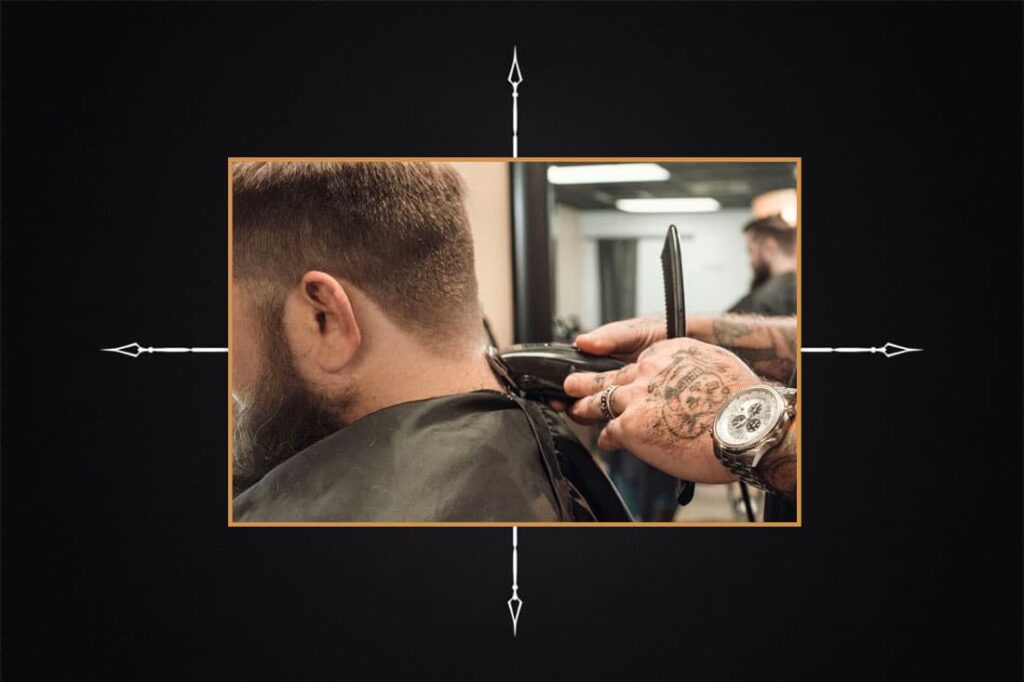
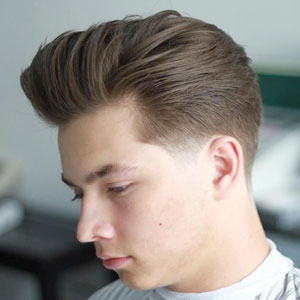
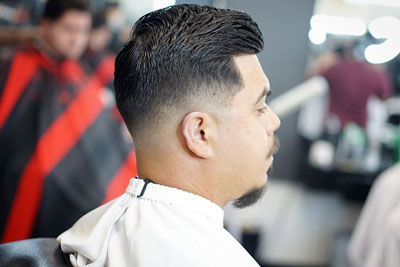
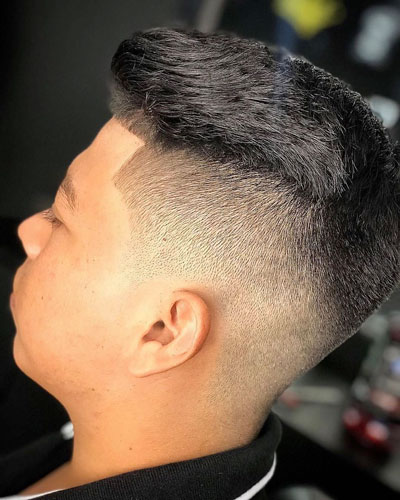
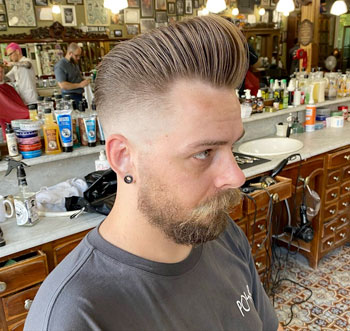
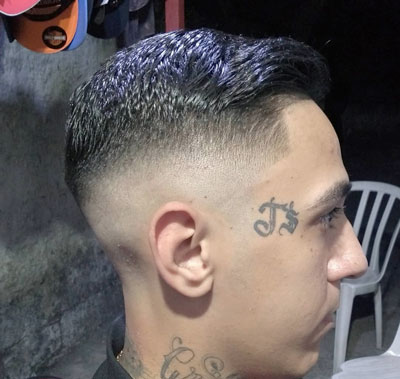
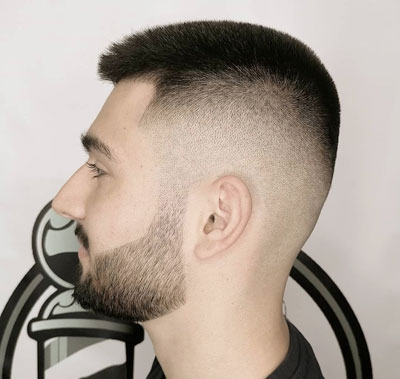
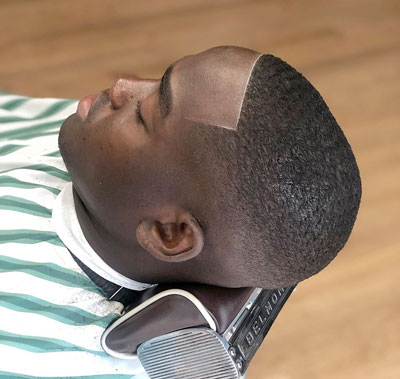
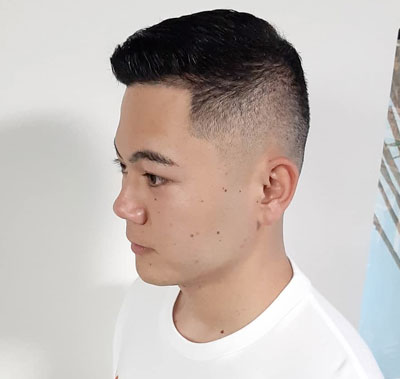
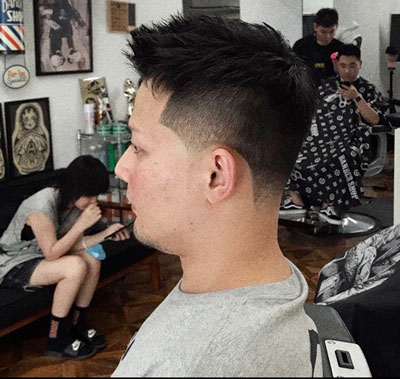
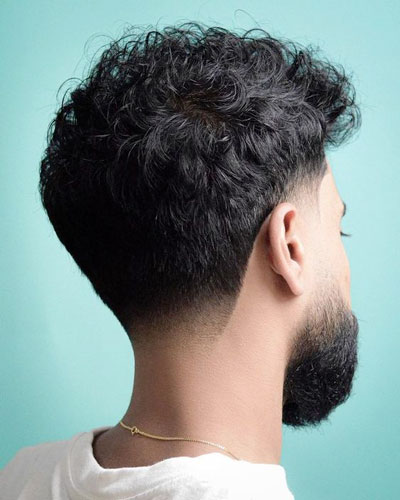
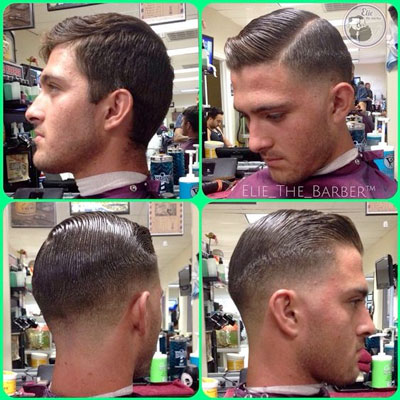
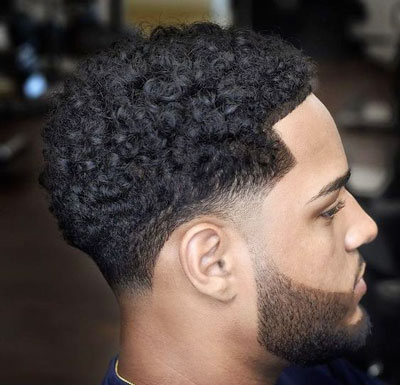

Very informative. Don’t think I’ll be trying to give myself a taper anytime soon though…
Fair enough, Wes. Between the pandemic and going deep into the details of this post, I have a whole new appreciation for how talented and detail-oriented my barber is.